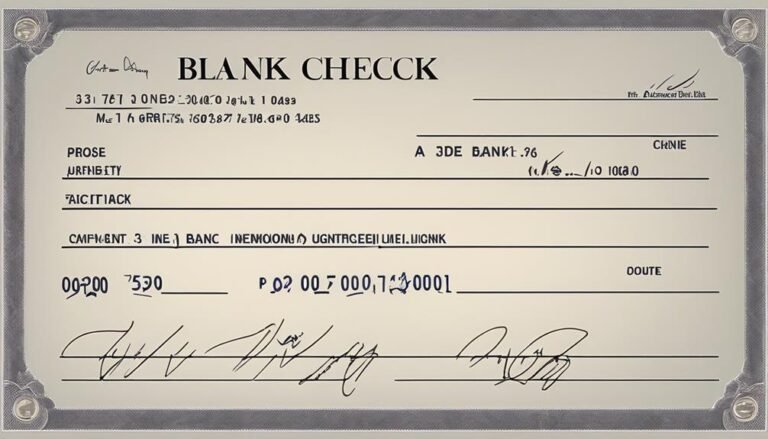Cost, Insurance, and Freight (CIF) Definition, Rules, and Example
Cost, Insurance, and Freight (CIF) is a trade term encompassing costs, insurance, and freight during international shipping. Seller duties include export processes, shipping, and insuring goods until they reach the destination port. Buyers assume responsibilities post-shipment, like unloading and paying duty charges. CIF transfers risk to the buyer when goods load on the vessel, with goods then owned by the buyer for claims purposes. CIF is distinct from Free on Board (FOB) with regards to insurance and freight charge responsibilities. This overview provides insight into CIF; further details can enhance your understanding of international trade agreements.
Key Takeaways
- CIF covers costs, insurance, and freight in international shipping.
- Seller handles export licenses, inspections, duty, taxes, and shipping freight.
- Buyer is responsible for unloading, duty charges, and delivery costs.
- CIF transfers risk to the buyer when goods are loaded on the vessel.
- CIF simplifies international trade by delineating seller and buyer responsibilities.
CIF Definition and Scope
CIF, an abbreviation for Cost, Insurance, and Freight, delineates an international shipping agreement that thoroughly covers the costs, insurance, and freight associated with a buyer's order during transit via sea, waterway, or ocean.
Under CIF, cost coverage includes expenses such as product inspections, packaging costs, customs clearance, duty, taxes, and shipping freight to the buyer's port.
Regarding insurance specifics, the seller is responsible for insuring the shipment and covering any damage or destruction to the goods during transit.
This agreement guarantees that the buyer's order is protected and that the costs and insurance aspects are comprehensively addressed throughout the shipping process.
Responsibilities of Seller and Buyer
The allocation of responsibilities between the seller and buyer in a CIF agreement is essential for ensuring a smooth and clear international shipping process.
In a CIF agreement, seller obligations include procuring export licenses, product inspections, shipping, loading, packaging costs, customs clearance, duty, taxes, shipping freight to the buyer's port, insuring the shipment, and covering any damage or destruction to the goods.
On the other hand, buyer liabilities encompass unloading products at the port terminal, transferring products to the delivery site, paying custom duty charges, import-related costs, transportation, unloading, and delivery charges to the final destination.
Clarifying and understanding these seller and buyer responsibilities are vital for a successful CIF transaction.
Transfer of Risk and CIF Differences
In international shipping agreements like CIF, the transfer of risk occurs at a specific point during the transit process, delineating responsibilities between the seller and the buyer.
- Risk Allocation:
- CIF transfers risk to the buyer when goods are loaded on the vessel.
- Buyer owns the goods once on the ship, requiring them to file claims for any transit damage.
- CIF may not suit containerized cargo where goods remain in containers pre-loading.
- Shipping Insurance:
- CIF differs from CFR by including insurance for goods during transit.
- CIF and FOB determine which party bears insurance and freight charges responsibilities.
Understanding these nuances in risk allocation and shipping insurance is essential for both sellers and buyers in CIF agreements.
Comparison With FOB and Shipping Terms
How do CIF, FOB, and other shipping terms compare with regards to cost allocation and responsibilities in international trade transactions?
CIF places the responsibility on the seller for shipping insurance and freight charges until the goods reach the buyer's destination port.
In contrast, FOB requires the seller to load the product onto the ship, with the buyer handling freight charges to the destination port and unloading costs.
FOB and CIF determine which party bears responsibility for insurance and freight charges, highlighting differences in cost allocation and risk management.
Understanding these shipping regulations, including terms like Carriage Paid To (CPT), Free on Board (FOB), and Incoterms, is essential for successful international trade transactions.
Application and Example of CIF
Shifting from the previous discussion on CIF and FOB in international trade transactions, an illustrative application of CIF can be observed in a scenario where a buyer like Best Buy utilizes this shipping agreement to import goods from a seller like Sony to a specific destination port.
- International Trade: CIF facilitates smooth international trade by clearly delineating responsibilities.
- Shipping Logistics: The seller loads goods onto the ship, transferring risk to the buyer.
- Buyer Benefits: Simplifies shipping for buyers, especially for ocean or waterway freight.
- Seller Responsibility: Covers shipping, insurance until goods reach the destination port.
- Common Choice: CIF is frequently chosen for its straightforward nature in shipping agreements.
Duty Charges and Freight in CIF
Analyzing duty charges and freight allocation in CIF agreements is essential for understanding the financial responsibilities of parties involved in international trade transactions. Import regulations play a vital role in determining the duty charges that the buyer needs to bear at the destination port.
In CIF agreements, sellers are responsible for shipping and insurance expenses until the goods arrive at the destination port, where the buyer takes over the duty charges. This clear delineation of responsibilities guarantees transparency and compliance with shipping logistics.
Clarity and Simplification in CIF
In facilitating international trade transactions, the Cost, Insurance, and Freight (CIF) agreement stands out for its emphasis on clarity and simplification of responsibilities between buyers and sellers during shipment.
- Simplification benefits: CIF simplifies the shipping process by clearly delineating each party's responsibilities.
- Risk allocation: CIF allocates risk from the seller to the buyer once goods are loaded onto the vessel, guaranteeing clarity in risk ownership.
- Clear delineation: CIF ensures a straightforward agreement for buyers, especially those new to international trade, seeking clear responsibilities.
- Responsibility clarity: CIF specifies seller responsibility for insurance and freight charges until goods reach the destination port.
- Beneficial for buyers: CIF benefits buyers who prefer a shipping agreement where the seller bears the responsibility for insurance and freight charges.
Conclusion
To sum up, deciphering the complexities of CIF agreements is similar to untangling a intricate tapestry of international trade, where the threads of cost, insurance, and freight interlace to dictate responsibilities and risks.
Just as a skilled weaver meticulously crafts each intricate pattern, understanding CIF requires precision and attention to detail to guarantee seamless transactions in the global marketplace.







